
Prague: The City of a Hundred Spires
Discover the enchanting allure of Prague, where history meets architectural splendor and cultural richness in the heart of Europe.
Prague, the capital city of Czechia, is a gem in the heart of Europe. Known for its stunning architectural beauty, it has a rich history that dates back more than a thousand years. From the Gothic spires of the Old Town to the Baroque palaces and gardens, every corner of Prague offers a glimpse into a bygone era. Wander through the historic streets and you'll come across the iconic Charles Bridge, adorned with statues and offering picturesque views of the Vltava River. The Old Town Square, with its Astronomical Clock, is a bustling hub that transports you back in time. Don't miss the Prague Castle, a massive complex that has been the seat of Czech kings, emperors, and presidents for centuries. Prague is also a cultural hotspot. Enjoy world-class performances at the National Theatre or explore the city's many museums and galleries. For a taste of local life, visit one of the traditional Czech pubs and try a pint of the world-famous Czech beer. With its unique blend of history, culture, and charm, Prague is a must-visit destination for any traveler.
Local tips in Prague
- Carry cash as many small shops and restaurants prefer it over cards.
- Use public transport. It's efficient and connects all major attractions.
- Visit early in the morning or late in the afternoon to avoid crowds at popular sites.
- Learn a few basic Czech phrases. Locals appreciate the effort.
- Try local dishes like goulash and trdelník for an authentic culinary experience.
Neighbourhoods in Prague
Prague: The City of a Hundred Spires
Prague, the capital city of Czechia, is a gem in the heart of Europe. Known for its stunning architectural beauty, it has a rich history that dates back more than a thousand years. From the Gothic spires of the Old Town to the Baroque palaces and gardens, every corner of Prague offers a glimpse into a bygone era. Wander through the historic streets and you'll come across the iconic Charles Bridge, adorned with statues and offering picturesque views of the Vltava River. The Old Town Square, with its Astronomical Clock, is a bustling hub that transports you back in time. Don't miss the Prague Castle, a massive complex that has been the seat of Czech kings, emperors, and presidents for centuries. Prague is also a cultural hotspot. Enjoy world-class performances at the National Theatre or explore the city's many museums and galleries. For a taste of local life, visit one of the traditional Czech pubs and try a pint of the world-famous Czech beer. With its unique blend of history, culture, and charm, Prague is a must-visit destination for any traveler.
When is the best time to go to Prague?
Iconic landmarks you can’t miss
Prague Castle
Explore Prague Castle, the largest ancient castle in the world, offering rich history, stunning architecture, and breathtaking views of the city.

Charles Bridge
Discover the enchanting beauty and rich history of Charles Bridge in Prague, a must-see landmark connecting the Old Town and Lesser Town.

Old Town Square
Experience the historic charm of Old Town Square, a vibrant plaza in Prague filled with stunning architecture, rich culture, and lively street life.

St. Vitus Cathedral
Explore the architectural splendor and rich history of St. Vitus Cathedral, a must-see landmark in Prague's iconic castle complex.

Wenceslas Square
Explore the vibrant Wenceslas Square, a historic plaza in Prague filled with culture, shopping, and iconic landmarks.

Prague Astronomical Clock
Discover the magic of the Prague Astronomical Clock, a stunning medieval timepiece that enchants visitors with its hourly performance and rich history.
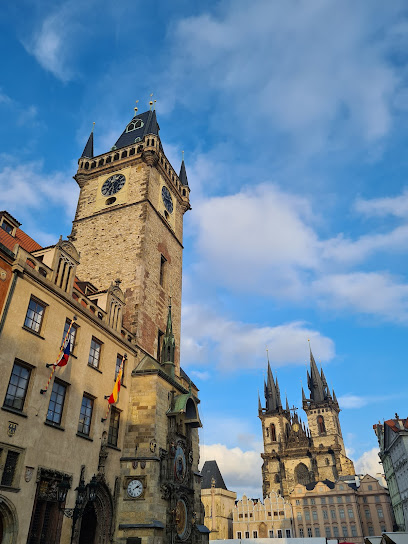
Dancing House
Discover the Dancing House, a modern architectural gem in Prague that beautifully blends contemporary design with the city's historical charm.

Vyšehrad
Experience the historic charm of Vyšehrad, a serene fortress in Prague offering stunning views, lush parks, and rich Czech heritage.

Prašná brána
Explore the Prašná brána, a historic Gothic tower in Prague that connects the Old and New Towns with stunning architecture and rich cultural significance.

Lennon Wall
Discover the vibrant Lennon Wall in Prague, a living tribute to peace and love, where art and expression come together in a colorful display.

Petrin Tower
Experience breathtaking views of Prague from the iconic Petrin Tower, a blend of history and scenic beauty in the heart of the city.

The Golden Lane
Explore the enchanting Golden Lane at Prague Castle, a historic street filled with colorful houses, shops, and captivating tales from the past.

Old Town Bridge Tower
Explore the stunning Old Town Bridge Tower in Prague - a historical gem with breathtaking views and rich architectural heritage.

Strahov Monastery
Explore the rich history and serene beauty of Strahov Monastery, a cultural gem in Prague with a stunning library and peaceful gardens.
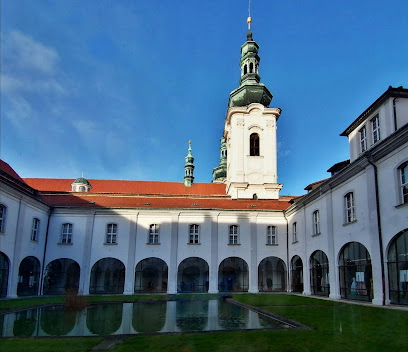
Statue of Saint Wenceslas
Discover the Statue of Saint Wenceslas, a monumental symbol of Czech heritage and pride, nestled in the vibrant heart of Prague's New Town.

Unmissable attractions to see
Prague Castle
Explore the grandeur of Prague Castle, a historic site filled with stunning architecture, rich culture, and breathtaking views of the city.
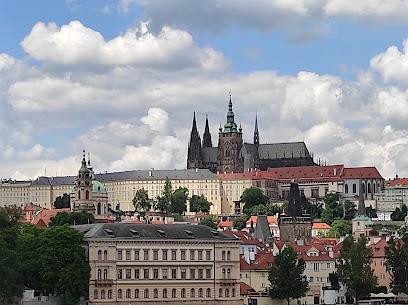
Charles Bridge
Explore the enchanting Charles Bridge in Prague, a historic marvel adorned with stunning statues and breathtaking views of the river.
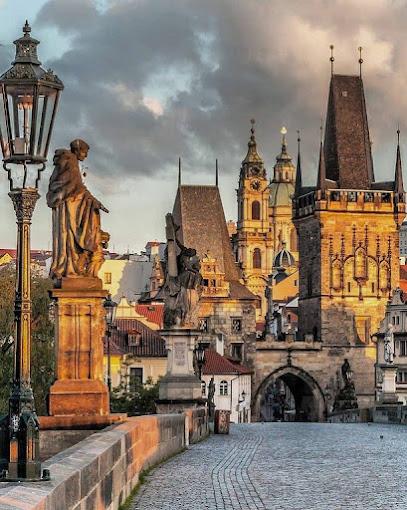
Old Town Square
Experience the enchanting blend of history and culture at Old Town Square, the iconic heart of Prague filled with stunning architecture and vibrant street life.
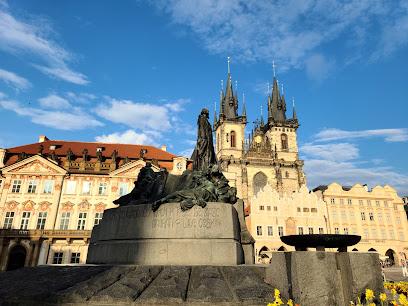
St. Vitus Cathedral
Discover the breathtaking beauty of St. Vitus Cathedral, a Gothic masterpiece in Prague's castle district, rich in history and architectural splendor.

Prague Astronomical Clock
Discover the marvel of the Prague Astronomical Clock, a historical gem blending art, science, and captivating lore in the heart of the city's Old Town.

Prague Zoo
Explore Prague Zoo, a captivating destination for wildlife enthusiasts and families, blending education and conservation in a stunning natural setting.

Dancing House
Explore the Dancing House, an architectural icon in Prague blending modern design with stunning river views, a must-visit for every tourist.

Vyšehrad
Experience the historical allure and breathtaking views of Vyšehrad, a stunning fortress park in Prague that captures the essence of Czech heritage.
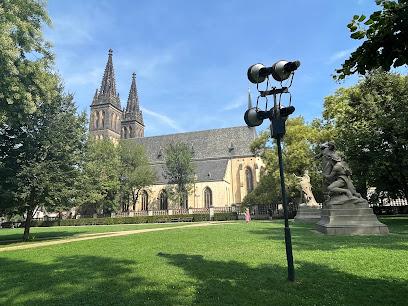
Duplex
Discover Duplex, the ultimate nightlife destination in Prague, offering stunning views, top DJs, and an unforgettable party atmosphere.

Prašná brána
Explore the historic Prašná brána, a Gothic masterpiece in Prague's Old Town, offering stunning views and rich cultural experiences.

Národní Muzeum
Explore Czech history at the Národní Muzeum, a cultural landmark in New Town, Prague, offering fascinating exhibits and stunning architecture.

Petrin Tower
Explore the breathtaking views and historical charm of Petrin Tower, a stunning Gothic landmark in Prague's picturesque landscape, perfect for every traveler.

Franz Kafka - Rotating Head by David Cerny
Explore the captivating Franz Kafka - Rotating Head sculpture in New Town, Prague, where modern art meets literary legacy in a unique visual experience.

Havelské tržiště
Explore Havelský Trh, a vibrant market in Prague's Old Town offering local crafts, delicious foods, and a captivating cultural experience.

Karlštejn Castle
Discover the historic Karlštejn Castle, a symbol of Czech heritage, nestled in the scenic countryside, offering breathtaking views and rich history.

Essential places to dine
Lokál Dlouhááá
Discover the heart of Czech gastronomy at Lokál Dlouhááá - where tradition meets flavor in every dish.
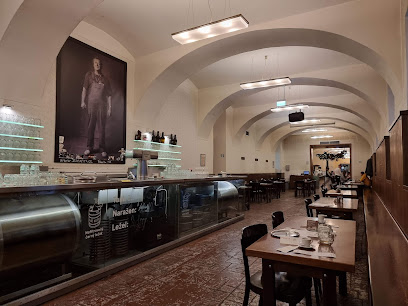
U Glaubiců
Experience authentic Czech cuisine in the heart of Malá Strana at U Glaubiců - where tradition meets taste.

Café Imperial
Experience the exquisite blend of traditional Czech cuisine and Art Nouveau elegance at Café Imperial in Prague.

Restaurace U Pinkasů
Savor the rich flavors of traditional Czech cuisine at Restaurace U Pinkasů, where every meal tells a story.
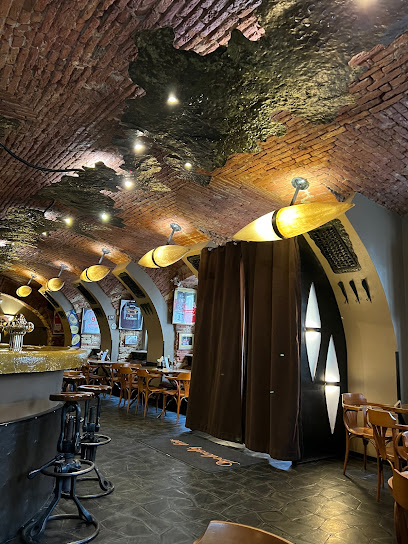
Kantýna
Discover authentic Czech flavors at Kantýna, where traditional meat dishes meet modern culinary excellence in New Town.

The Street Burgers, Street food and Cocktails Prague 1
Discover gourmet hamburgers and cocktails at The Street Burgers in Prague's historic center – where flavor meets vibrant street food culture.

Sad Man's Tongue Bar & Bistro
Experience unique American flavors at Sad Man's Tongue Bar & Bistro in Prague’s Old Town – where great food meets vibrant nightlife.
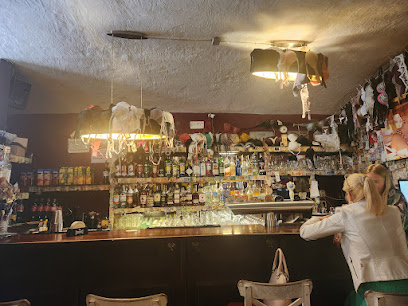
U Pivrnce
Experience authentic Czech flavors in the heart of Prague at U Pivrnce – where tradition meets taste!

U Kroka
Experience authentic Czech cuisine at U Kroka in Prague - where tradition meets flavor in a cozy setting.

Restaurant U provaznice
Experience authentic Czech cuisine in the heart of Old Town at Restaurant U provaznice, where tradition meets taste.

Restaurant Mlýnec
Experience modern European cuisine at Restaurant Mlýnec in Old Town with breathtaking views of Prague's iconic landmarks.

Restaurace Mlejnice
Experience authentic Czech cuisine at Restaurace Mlejnice in Old Town Prague – where tradition meets taste.

Smíchovský radniční sklípek
Experience authentic Czech cuisine at Smíchovský radniční sklípek in Prague 5-Anděl, where tradition meets taste in a charming atmosphere.

Restaurace U Mlynáře
Experience authentic Czech cuisine at Restaurace U Mlynáře in Malá Strana - where tradition meets flavor in every dish.

Husinec
Discover authentic Czech cuisine at Husinec - where every meal tells a story in New Town.

Markets, malls and hidden boutiques
MYSLBEK Shopping Gallery
Explore the MYSLBEK Shopping Gallery in Old Town, a vibrant blend of modern shopping and rich Czech culture in the heart of Prague.

THE VINTAGE PRAGUE
Explore the enchanting world of vintage fashion at The Vintage Prague, where every piece has a story to tell and history comes alive.

LOCAL ARTISTS
Explore Local Artists in Old Town Prague for unique handcrafted gifts and authentic souvenirs that capture the essence of Czech artistry.

Bric a Brac Antiques
Explore Bric a Brac Antiques in Prague, where history comes alive through a stunning collection of unique antiques and collectibles.

Never Enough & The Dudes Prague
Explore a unique blend of local fashion and art at Never Enough & The Dudes in Prague's vibrant Vinohrady district, complete with a cozy beer garden.

Pylones
Explore Pylones in Old Town for whimsical gifts, unique home decor, and playful costume jewelry that capture the spirit of your travels.

Blue Prague
Explore Blue Prague, a charming gift shop in Old Town offering unique souvenirs and local treasures that capture the essence of this historic city.

Lovely Little Shop
Explore Lovely Little Shop in Old Town Prague for unique souvenirs and local crafts that embody the spirit of Czech artistry.

Old Prague Souvenir shop
Explore Old Prague Souvenir Shop for authentic Czech gifts, from sparkling crystal to traditional crafts, capturing the city's rich culture.

Place Store Praha
Explore Place Store Praha, a unique shopping experience in the heart of Old Town, filled with local treasures and international finds.

Lula Vintage Prague. vintage fashion store
Explore unique vintage treasures at Lula Vintage Prague, where timeless fashion meets sustainable shopping in the heart of the city.
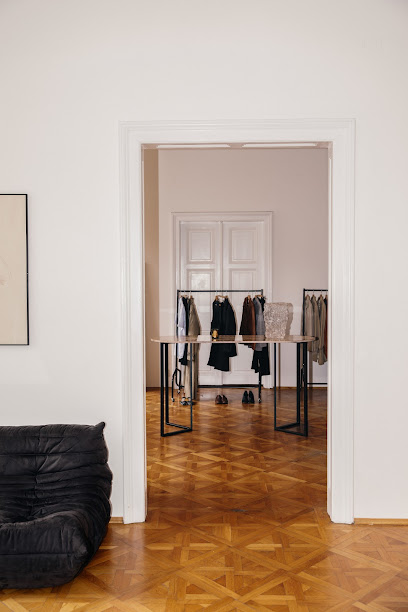
My Prague
Discover unique souvenirs and local crafts at My Prague, a charming gift shop in the heart of the city, perfect for tourists seeking authentic treasures.

Prague Souvenirs Shop
Explore the charm of Prague through unique gifts and authentic souvenirs at the Prague Souvenirs Shop, a treasure in the heart of the Old Town.

BOHO Vintage Concept Store
Explore the eclectic world of vintage fashion at BOHO Vintage Concept Store in Prague's vibrant Vinohrady district, where unique treasures await your discovery.

The Item
Explore The Item in Josefov for a unique shopping experience featuring fine apparel and exceptional service in a historic setting.

Essential bars & hidden hideouts
Hemingway Bar
Experience the charm of Hemingway Bar in Old Town, where exquisite cocktails and a literary atmosphere await your discovery.

Anonymous Bar
Discover the vibrant atmosphere and innovative cocktails at Anonymous Bar, the heart of Old Town's nightlife.

The Pub Praha 1
Discover a unique bar experience in Prague with self-serve beer taps and traditional Czech cuisine at The Pub Praha 1.

Black Angel's Bar
Explore Black Angel's Bar: A 1930s-inspired cocktail haven in the heart of Prague's Old Town, offering exquisite drinks and enchanting ambiance.

HANGAR CLUB & BAR PRAGUE
Discover the energetic vibe of Hangar Club & Bar in Prague, where lively nightlife meets delectable cuisine in a unique aviation-themed setting.

Bugsy's Bar
Experience the elegance of Bugsy's Bar in Prague, where every cocktail is a masterpiece and the ambiance is simply unforgettable.

L'Fleur
Discover L'Fleur, the stylish cocktail bar in Old Town, offering innovative drinks and a vibrant atmosphere for an unforgettable night out.

Green Devil's Absinth Bar & Shop
Discover the enchanting world of absinthe at the Green Devil's Absinth Bar & Shop in Prague's historic Old Town.

Parlour
Experience the lively spirit of New Town at Parlour, a premier bar known for its exquisite drinks and vibrant atmosphere.

Bar Bluelight
Experience the unique blend of ambiance and mixology at Bar Bluelight in Malá Strana, a must-visit for cocktail enthusiasts and night owls.

Crazy Daisy
Experience the vibrant nightlife at Crazy Daisy, a premier cocktail and hookah bar in Můstek, where creativity meets flavor.

Bar No. 7 - Prague
Discover Bar No. 7 in Prague's New Town, where vibrant drinks and a cozy atmosphere create the perfect nightlife experience.

Balcony Bar Prague
Discover the perfect blend of barbecue delights and fine wines at Balcony Bar Prague, your go-to destination for a memorable culinary experience in the heart of the city.

Kenton's New York Bar
Experience the vibrant nightlife of Manhattan at Kenton's New York Bar in Prague's charming Old Town, where exquisite cocktails and a chic atmosphere await.

Tynska Bar and Books
Experience the enchanting blend of literature and mixology at Tynska Bar and Books in Prague's historic Old Town.

Local Phrases
-
- HelloAhoj
[ahoy] - GoodbyeNa shledanou
[na shledanou] - YesAno
[ah-no] - NoNe
[neh] - Please/You're welcomeProsím
[pro-seem] - Thank youDěkuji
[dyeh-koo-yee] - Excuse me/SorryPromiňte
[proh-meen-tyeh] - How are you?Jak se máte?
[yak seh mah-teh] - Fine. And you?Dobře. A vy?
[dob-zheh. ah vee] - Do you speak English?Mluvíte anglicky?
[mloo-vee-teh ahn-gleet-skee] - I don't understandNerozumím
[neh-roh-zoo-meem]
- HelloAhoj
-
- I'd like to see the menu, pleaseRád bych viděl menu, prosím
[rahd bikh vee-dyehl meh-noo, pro-seem] - I don't eat meatNemám maso
[neh-mahm mah-soh] - Cheers!Na zdraví!
[na zdrah-vee] - I would like to pay, pleaseChtěl bych zaplatit, prosím
[khteel bikh zah-pla-teet, pro-seem]
- I'd like to see the menu, pleaseRád bych viděl menu, prosím
-
- Help!Pomoc!
[poh-mohts] - Go away!Jdi pryč!
[ydee preets] - Call the Police!Zavolejte policii!
[zah-vo-leh-yeh poh-lee-tsee] - Call a doctor!Zavolejte lékaře!
[zah-vo-leh-yeh lay-kar-zheh] - I'm lostZtratil jsem se
[ztrah-teel yehm seh] - I'm illJsem nemocný
[yehm neh-mohts-nee]
- Help!Pomoc!
-
- I'd like to buy...Chtěl bych koupit...
[khteel bikh koh-oo-peet] - I'm just lookingJen se dívám
[yehn seh dee-vaam] - How much is it?Kolik to stojí?
[ko-leek toh stoh-yee] - That's too expensiveTo je příliš drahé
[toh yeh przh-leezh dra-heh] - Can you lower the price?Můžete snížit cenu?
[moo-zheh-teh snee-zheet tseh-noo]
- I'd like to buy...Chtěl bych koupit...
-
- What time is it?Kolik je hodin?
[ko-leek yeh hoh-deen] - It's one o'clockJe jedna hodina
[yeh yehd-nah hoh-dee-nah] - Half past (10)Půl jedenácté
[pool yeh-de-nyahk-theh] - MorningRáno
[rah-noh] - AfternoonOdpoledne
[ohd-poh-lehd-neh] - EveningVečer
[veh-chehr] - YesterdayVčera
[v-cheh-rah] - TodayDnes
[dnes] - TomorrowZítra
[zheet-rah] - 1Jedna
[yehd-nah] - 2Dva
[dvah] - 3Tři
[trzhee] - 4Čtyři
[chtih-zhee] - 5Pět
[pyet] - 6Šest
[shest] - 7Sedm
[sedm] - 8Osm
[oh-sm] - 9Devět
[deh-vyet] - 10Deset
[deh-set]
- What time is it?Kolik je hodin?
-
- Where's a/the...?Kde je...
[kdeh yeh] - What's the address?Jaká je adresa?
[ya-kah yeh ah-dreh-sah] - Can you show me (on the map)?Můžete mi to ukázat (na mapě)?
[moo-zheh-teh mee toh oo-kah-zat (nah mah-peh)] - When's the next (bus)?Kdy jede další (autobus)?
[kdee yeh-deh dah-lee-shee (ow-toh-boos)] - A ticket (to ....)Jedno jízdenka (do ....)
[yed-noh yeez-dehn-kah (doh)]
- Where's a/the...?Kde je...
History of Prague
-
Prague's origins date back to the 9th century when it was established as a fortified settlement. According to legend, Princess Libuše, a mythical figure, foretold the city's founding, proclaiming that Prague would become a 'great city whose glory will touch the stars.'
-
The 14th century marked the beginning of Prague's golden age under the reign of Charles IV. He transformed the city into an imperial capital, establishing Charles University in 1348, the oldest university in Central Europe. He also commissioned architectural masterpieces like the Charles Bridge and St. Vitus Cathedral.
-
In the early 15th century, Prague became the center of the Hussite Wars, a series of conflicts initiated by religious reformer Jan Hus. Hus's followers, known as Hussites, sought to reform the Catholic Church, leading to significant social and religious upheaval in the city and beyond.
-
The Defenestration of Prague in 1618 was a pivotal event that ignited the Thirty Years' War. Protestant nobles threw two Catholic officials out of a window at Prague Castle, symbolizing the growing tensions between Protestant and Catholic factions in the Holy Roman Empire.
-
Following the Battle of White Mountain in 1620, Prague fell under Habsburg rule. The city experienced significant Baroque architectural development during this time, with landmarks like St. Nicholas Church and the Loreta complex being constructed.
-
In the 19th century, Prague was at the heart of the Czech National Revival, a cultural movement aimed at reviving Czech language and identity. Key figures like Josef Jungmann and František Palacký played crucial roles in promoting Czech literature, history, and education.
-
Prague endured harsh times during World War II, suffering under Nazi occupation from 1939 to 1945. The city witnessed significant resistance efforts, including the assassination of high-ranking Nazi official Reinhard Heydrich by Czech resistance fighters.
-
The Prague Spring of 1968 was a period of political liberalization in Czechoslovakia under the leadership of Alexander Dubček. The movement sought to create 'socialism with a human face,' but was abruptly ended by the Warsaw Pact invasion, which restored hardline communist control.
-
In 1989, the Velvet Revolution marked the end of communist rule in Czechoslovakia. Peaceful protests and civic movements led by figures like Václav Havel culminated in the establishment of a democratic government, restoring political and cultural freedoms to Prague and the nation.
-
Today, Prague is a vibrant city that seamlessly blends its rich historical heritage with modern innovation. Known for its stunning architecture, thriving arts scene, and lively cultural festivals, Prague continues to enchant visitors from around the world.
Prague Essentials
-
Prague is well-connected to major cities around the world. Václav Havel Airport Prague (PRG) is the main international gateway, located about 17 kilometers west of the city center. Direct flights are available from numerous European cities, as well as some destinations in North America, Asia, and the Middle East. From the airport, you can reach the city center by bus, taxi, or airport shuttle services. Alternatively, Prague is accessible by train and bus from various European cities, with Prague's main railway station (Praha hlavní nádraží) and main bus station (Florenc) being key transit hubs.
-
Prague boasts an efficient and affordable public transportation system, including trams, buses, and a metro network. The metro operates from 5 AM to midnight, while trams and buses have night services. Tickets can be purchased at vending machines, newsstands, or via mobile apps and must be validated before use. Taxis are available but it's advisable to use reputable companies or ride-hailing apps to avoid overcharging. For a scenic experience, consider renting a bike or walking, especially in the historic city center.
-
The official currency in Prague is the Czech Koruna (CZK). While credit cards are widely accepted in hotels, restaurants, and larger shops, it is wise to carry some cash for smaller establishments and street vendors. ATMs are plentiful throughout the city. Be cautious of currency exchange offices; opt for banks or reputable exchange services to avoid unfavorable rates and hidden fees.
-
Prague is generally a safe city for tourists, but it is always wise to stay vigilant. Pickpocketing can occur in crowded areas such as Old Town Square, Charles Bridge, and public transportation. Avoid walking alone at night in less populated areas, particularly around Wenceslas Square and certain parts of Žižkov. Keep your belongings secure and be cautious of scams targeting tourists.
-
In case of an emergency, dial 112 for immediate assistance, which is the general emergency number in the EU. For police assistance, dial 158; for fire services, dial 150; and for medical emergencies, dial 155. Major hospitals like the General University Hospital in Prague offer emergency services. Pharmacies are available throughout the city for minor health issues. It's advisable to have travel insurance that covers medical emergencies.
-
Fashion: Do dress comfortably and appropriately for the weather. Avoid overly casual attire in upscale restaurants and cultural venues. Religion: Do respect religious sites by dressing modestly and observing silence. Public Transport: Do offer your seat to elderly passengers and avoid speaking loudly. Don't eat or drink on public transport. Greetings: Do greet people with a handshake and a friendly 'Dobrý den' (Good day). Eating & Drinking: Do try local dishes such as goulash and trdelník. Don't forget to tip (around 10%) in restaurants if the service is good.
-
To experience Prague like a local, visit farmers' markets such as Náplavka for fresh produce and local delicacies. Explore less touristy neighborhoods like Vinohrady and Letná for vibrant cafes and parks. Attend cultural events and festivals, particularly those featuring traditional Czech music and dance. For a unique view of the city, take a walk along the Vltava River or visit one of the many beer gardens scattered across the city.
Nearby Cities to Prague
-
Things To Do in Kutná Hora
-
Things To Do in Plzeň
-
Things To Do in Hradec Králové
-
Things To Do in Karlovy Vary
-
Things To Do in Dresden
-
Things To Do in České Budějovice
-
Things To Do in Český Krumlov
-
Things To Do in Brno
-
Things To Do in Linz
-
Things To Do in Leipzig
-
Things To Do in Olomouc
-
Things To Do in Wroclaw
-
Things To Do in Vienna
-
Things To Do in Nuremberg
-
Things To Do in Opole




















